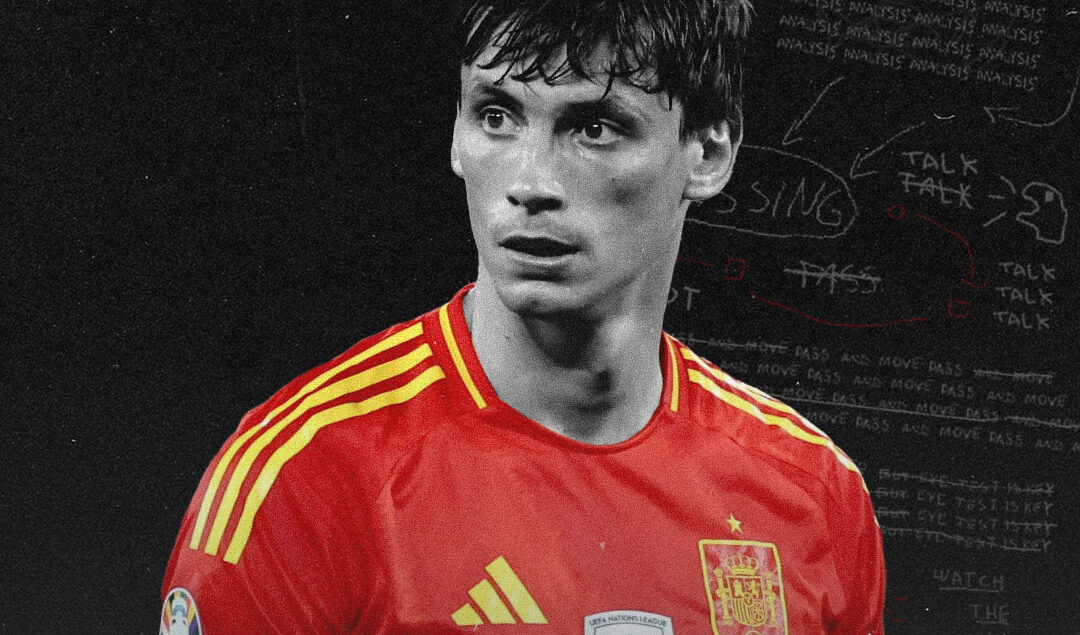Spain vs. England: Analyzing The Biggest Keys for Both Sides
A thrilling Euro 2024 will conclude on Sunday when the victors are crowned after the penultimate showdown in Berlin. Spain and England took different paths to the final but reached the same destination – one step away from European glory.
In this comprehensive article, we will tactically preview the game using a different method. Instead of highlighting the general tactical strengths and weaknesses, we will conduct a micro-analysis, focusing on all the tactical intricacies and nuances based on the ball’s location. Let’s get started.
Spain’s Defensive Third
When Spain settles into a low block in their defensive third, their shape is usually a 4-3-3 or a 4-5-1, depending on whether the manager has opted for a more aggressive or passive out-of-possession approach, which is determined by the positioning of the opposition fullback.
To elaborate, a more front-footed defensive approach would represent Spain’s frontline trying to prevent the opposition center-backs from having time and space on the ball. It could be a sensible strategy if Luis de la Fuente believes England’s central defenders are pregnable to pressure, leading to advantageous possession turnovers.
However, if Gareth Southgate positions the fullbacks high, which causes a 2v1 on the fullback, Spain would likely opt to drop the winger and prevent an opposition overload. A riskier plan for the Spaniards could involve the winger staying high to provide a counter-attacking outlet upon possession turnover, but this is unlikely.
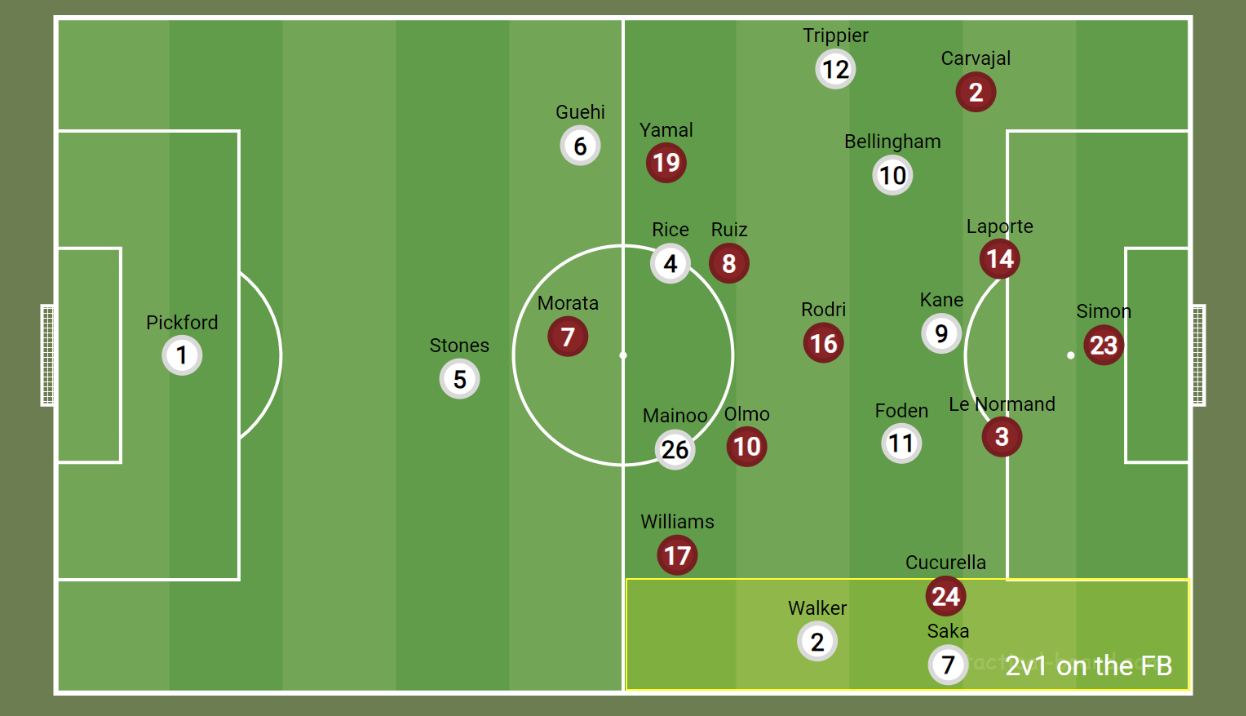
This overload could also be initiated with an attacking midfielder pulling wide and close to the winger. The Spain center-backs will probably man-mark the forward in such situations to prevent opening gaps in the defensive line. Therefore, an overload on the wings would occur.
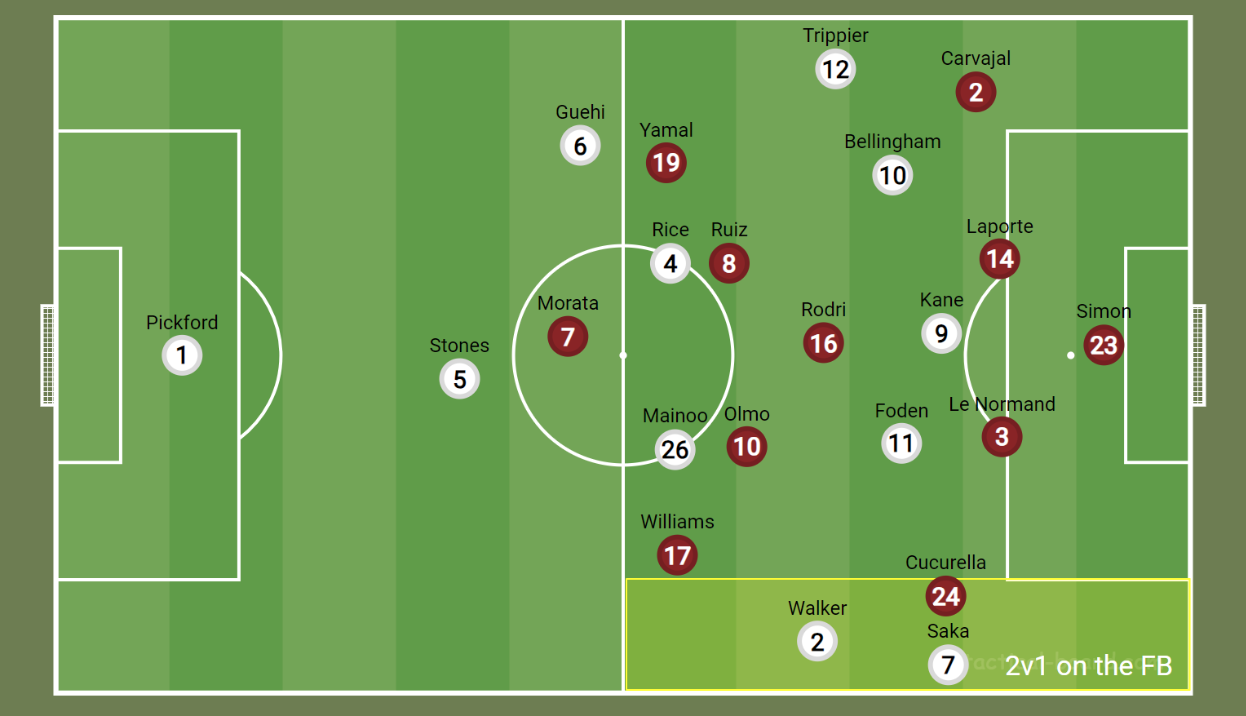
To prevent this, Luis de la Fuente will command his winger to provide support. Nevertheless, Southgate could emphasize wide overloads by instructing the attacking midfielder and the fullback to drift to the wings. But this will be unlikely to add more protection at the back. Furthermore, if England does try to cause overloads on the wing, it will likely be through the movement of the attacking midfielder rather than the fullback – ensuring constant defensive security in the backline.
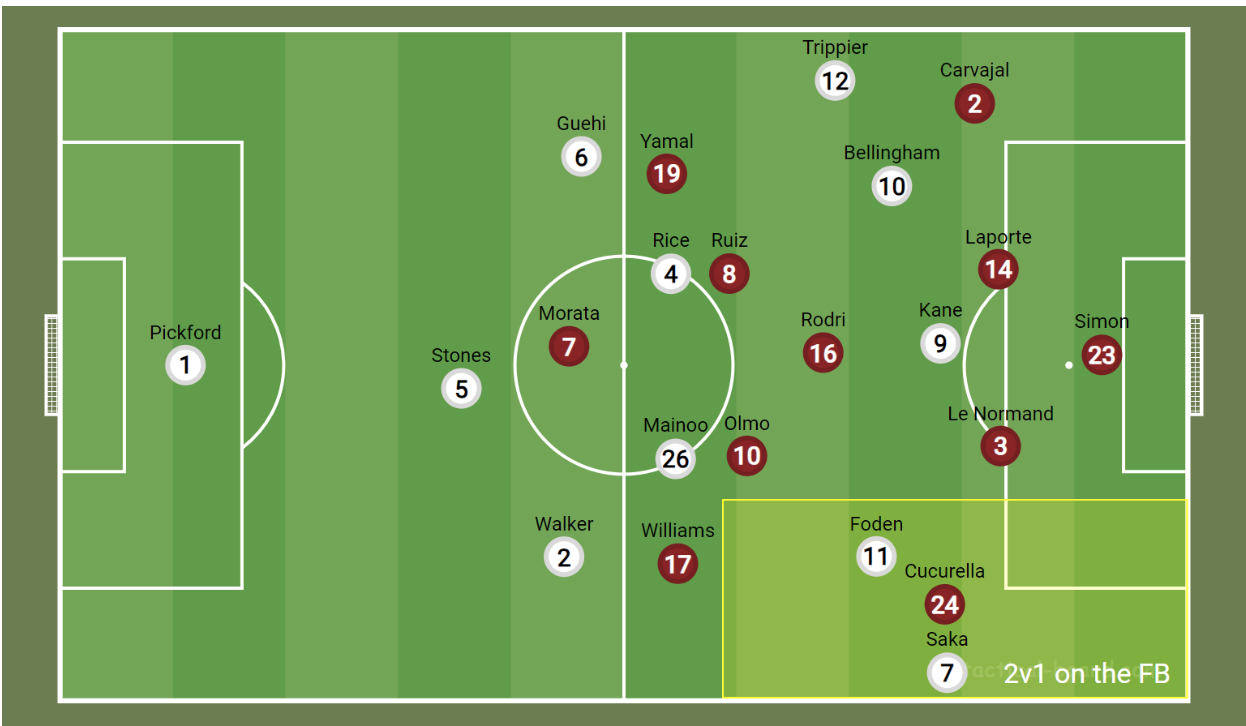
England would position in a fluid 3-2-5 in-possession structure, as they did against the Netherlands, with the main outlets being the central midfielders in the half-spaces and between the lines, with right winger Bukayo Saka’s one-versus-one expertise also a possibility for chance creation. Furthermore, if Spain attempts to protect the space in front of the defensive line with three players, England will have the opportunity to benefit from central overloads, as they did in the semi-finals.
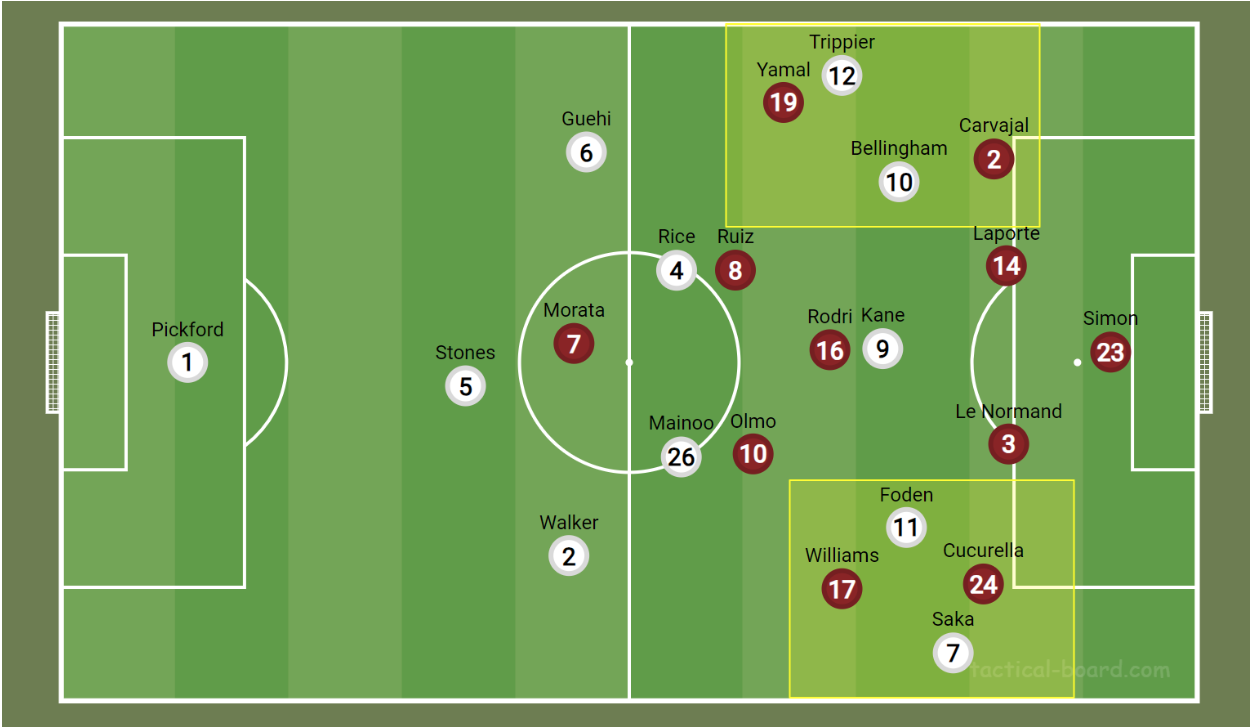
The English have looked unconvincing against low block this Euros. Moreover, their conservative style would not encourage risky plays through the center but would prefer to exploit the space in the opposition’s structure if gaps arise. Nevertheless, from this position, Southgate would be more concerned about when possession is turned over. Although England’s rest defense structure provides some assurance, they have looked vulnerable all tournament to quick and direct plays, including the semi-final.
This is a worrying picture for England supporters as Spain is the most direct and efficient team in transitional moments. With quick and incisive wingers in Nico Williams and Lamine Yamal, Southgate will hope his wide center backs – Kyle Walker and Marc Guehi – can cope with the pace and dribbling on the counter. If England also decides to force overloads on one side of the pitch, as discussed earlier, it would leave them vulnerable on diagonal transitions, with the far-sided winger free to run at the defender at pace and in space.
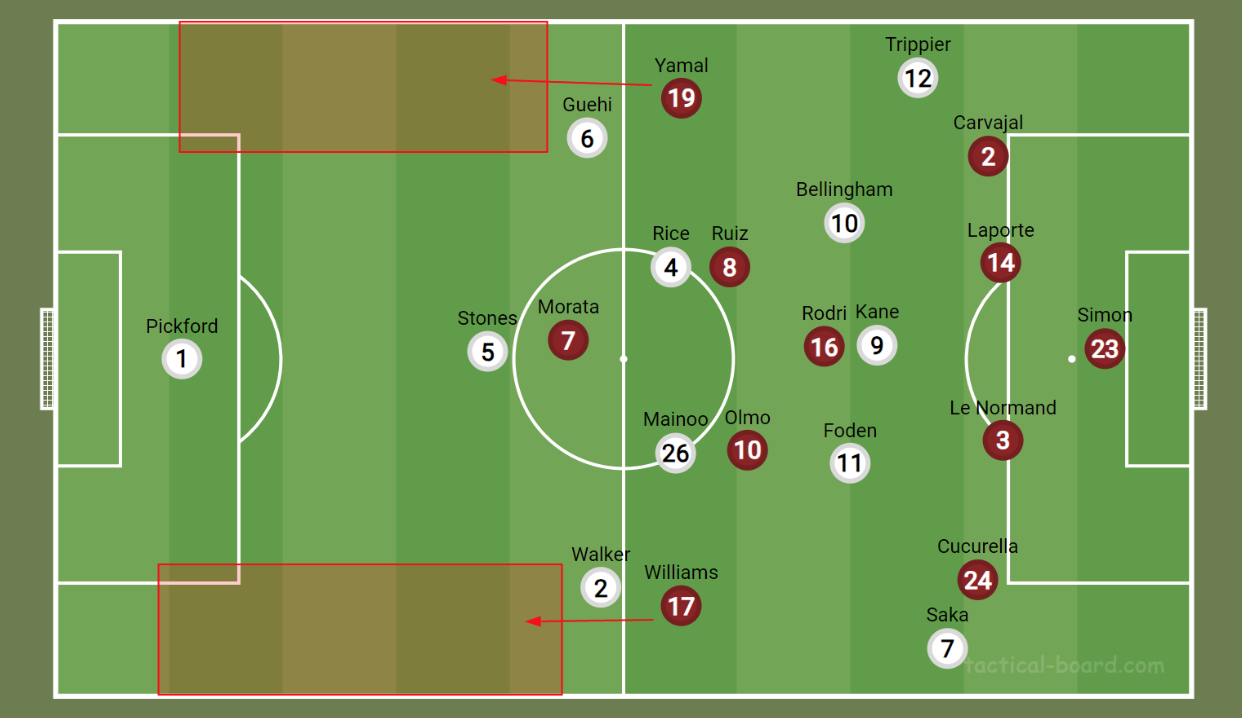
When Spain tries to build out from the back in their third, England may look to press high as their passive mid-block has looked vulnerable at various stages in this tournament. However, Southgate will likely resort to the mid-block due to two main factors.
Firstly, the England forwards have not proved to be intelligent and consistently effective pressers, with misjudgment of angles and timing of their off-ball runs allowing the opposition to play through their press. Furthermore, Southgate would prefer a plus one or two in the second and third lines of pressure. Thereby further handicapping the front-line press, as the three English players will need to defend five of Spain.
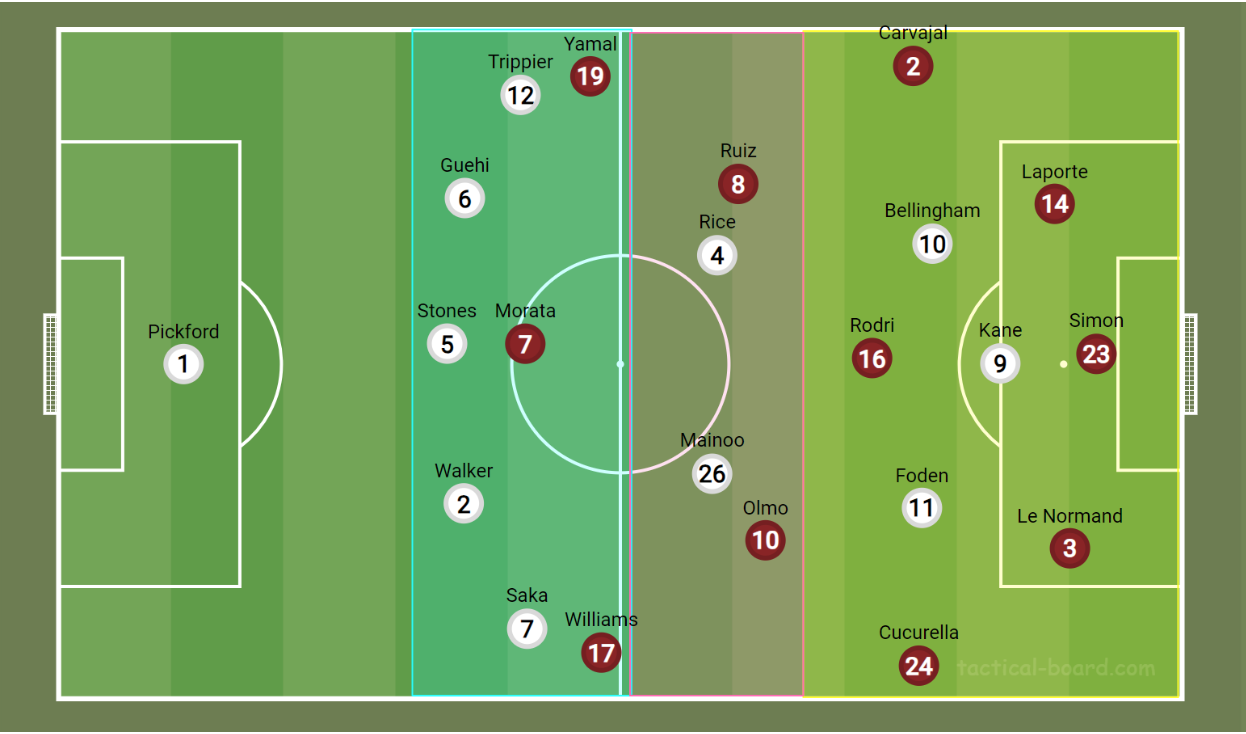
Secondly, a man-for-man press would leave the backline 3v3 against Spain’s forwards. The one-versus-one proficiency of Yamal and Williams will damage England in the transition, making this strategy unfeasible and irrational.
Hence, we will probably see a passive mid to high defensive block when Spain builds out from the back, with little to no pressure to prevent the opposition from progressing possession – although England may experiment with a bolder approach if the tie does not swing in their favor.
England’s Defensive Third
Spain’s free-flowing forward line and the wide combinations they adopt have been extensively covered over the past month. So, we will only focus on the potential areas of overload that Southgate has to prepare for and identify opportunities and threats for both teams.
La Roja will aim to create wide and central overloads with the aggressive positioning of the fullbacks on the wings and attacking midfielders in the half-spaces. Since they are so adept at creating chances with this structure, opposition teams often drop back to protect their goal. However, the consequential impact is that it pins their attackers in deep positions, stunting their ability to counter.
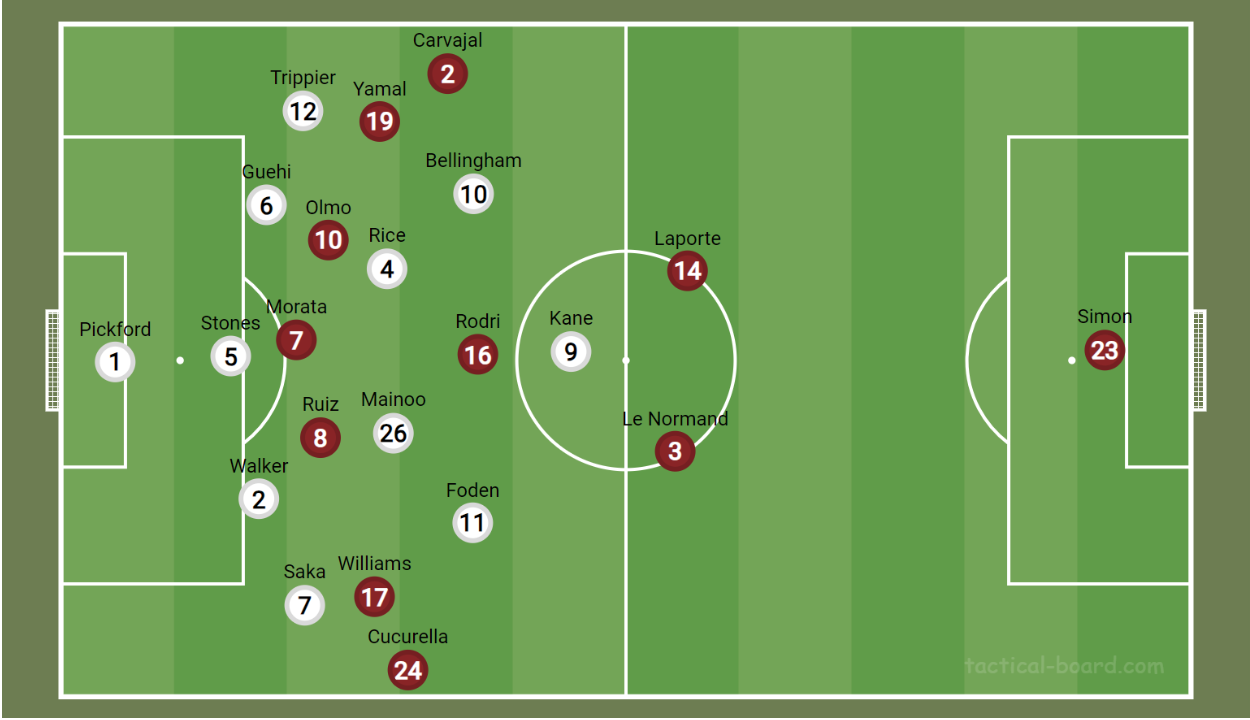
Southgate will particularly have to drill specific instructions into marking the movement of the fullback and the wingers, who sometimes overlap and other times drift infield to drag markers out of position to create space for their teammates. With a back five and a defensively astute pair of central midfielders, England will be in a favorable position to cope with Spain’s offensive onslaught. However, they will still require utmost focus in defensive situations against one of the best offensive teams in the competition.
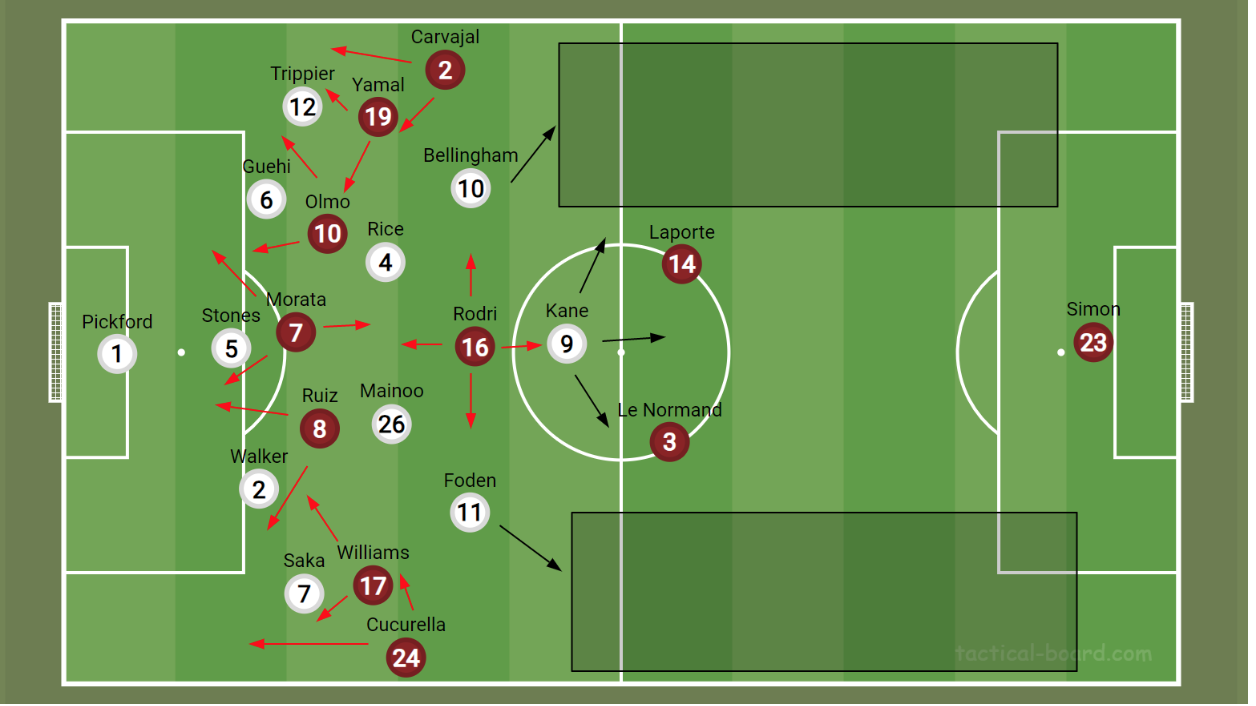
Although England will be pinned back, they still have the chance to counter-punch Spain on the break. In transition, a striker like Ollie Watkins would be more suitable than Harry Kane, with runs behind the back line. However, it is unlikely that the Aston Villa striker will start. Nevertheless, as the game goes on, bringing Watkins on from the bench also provides immense upsides against a more fatigued Spanish backline.
Middle Third
When possession is in the middle third of the pitch, there will likely be a lot of probing and fainting as they attempt to find holes in the opposition’s defensive structure. Nevertheless, mid-block systems have generally looked exposed in this Euros, especially in the second half. So, it does open a beacon of opportunity to the team on the ball in a few ways.
Firstly, with passive first and second lines of pressure, the team on the ball can find the line-splitting pass between the opposition defenders. Secondly, intelligent rotations can pull apart the rigid defensive structure and force space creation if the out-of-possession team has delegated man-marking responsibilities in certain zones. And lastly, there will be space behind the backline for runners to be found with direct long balls.
In such scenarios, Spain has proved more well-equipped to tear apart mid-block structures due to the variety of skill sets in their forward line. But England demonstrated in the first half against the Netherlands that if the opposition sat back and increased the distance between their lines of pressure, elite central creators like Phil Foden and Jude Bellingham would make them pay.
The two contestants are vastly conflicting in their play styles. The Spanish have a distinctive identity that relies on fast attacking moves and a high-pressing off-ball system. From their first match in this tournament, Luis de la Fuente’s approach was both entertaining and effective.
Spain – Results in Euros 2024
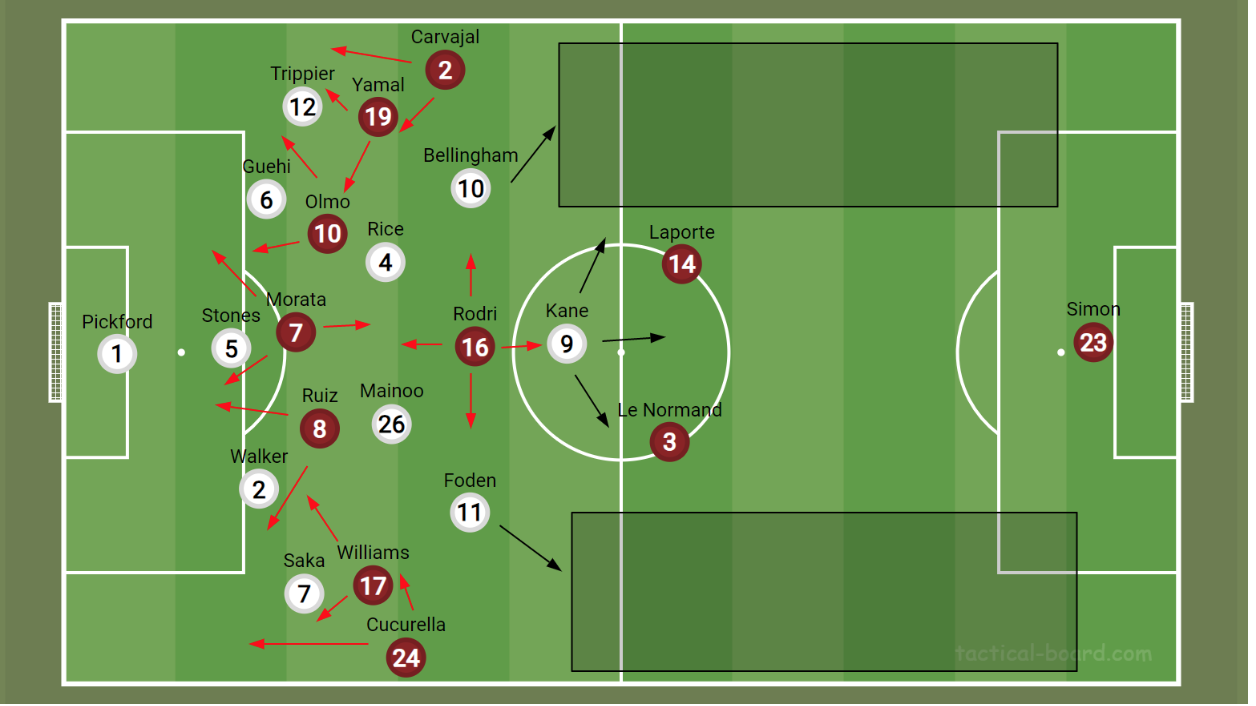
On the contrary, Southgate’s team has struggled to discover a personality for themselves. Although England topped Group C, their unconvincing performances and results did not encourage supporters back home.
England – Results in Euros 2024
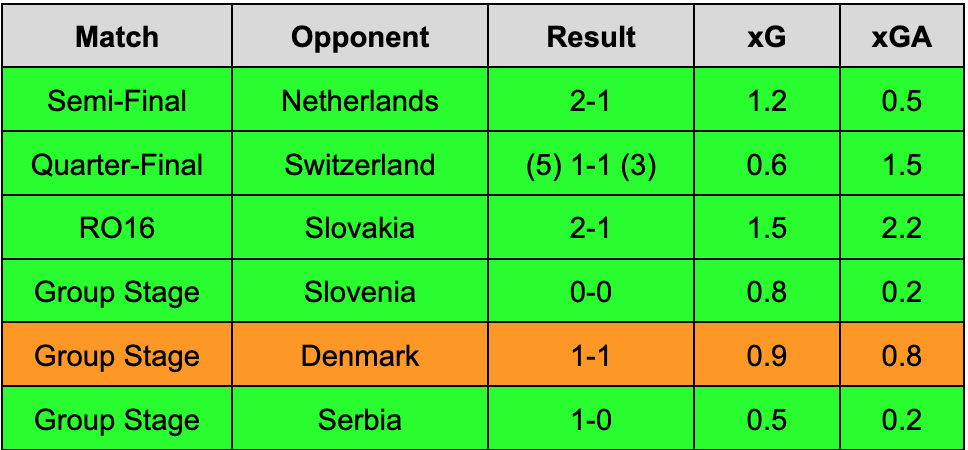
Nevertheless, the outcome on the day of the grand finale is the imperative result that matters. If Spain is crowned champions on Sunday, Luis de la Fuente will be commended for his bold tactical approach. Moreover, it will propel Spain to the summit of European football after disappointing performances over the past decade on the international stage. Conversely, Southgate could end England’s 58-year-long wait for an international trophy, having come close to tasting victory in the same competition just three years ago.
Spain and England will go blow for blow in a momentous occasion till one achieves indisputable platinum status and the other tragically collapses on the final hurdle. When the smoke clears out after the fireworks on Sunday night, there will only be one nation standing tall.
By: Fahd Ahmed / @fahdahmed987
Featured Image: @GabFoligno / Chris Brunskill / Fantasista / Getty Images
